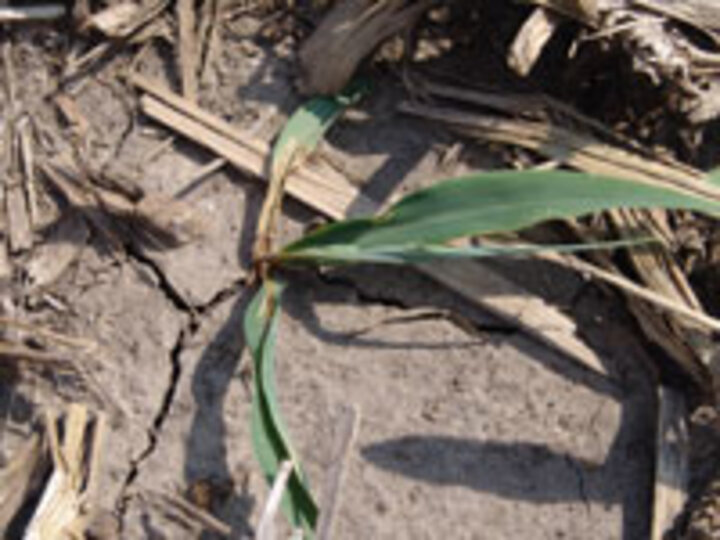


Early planting and intermittent rains are contributing to the development of seedling diseases in corn this spring. The most common seedling diseases identified in samples submitted to the UNL Plant and Pest Diagnostic Clinic are those caused by Pythium and Fusarium species.
Seedling diseases can be caused by any of several common soilborne organisms, such as Pythium, Fusarium, Rhizoctonia or plant parasitic nematodes. Seedling diseases are often difficult to differentiate and diagnose because their symptoms are very similar. Sometimes, diagnosis may be of limited value because management is the same for several seedling diseases. Microscopic examination and other laboratory analyses of the diseased seedlings often can identify the cause(s) of the problem. Seedling diseases can be confused with insect injury, herbicide damage, planting problems, or environmental stresses that have similar symptoms. Possible symptoms of seedling diseases are:
- Rotted seed prior to germination
- Rotted or discolored seedlings after germination, but prior to emergence
- Post-emergence seedling damping off (Figures 1-3)
- Root decay
At least 14 species of Pythium can cause seedling blight and root rot. These pathogens require excessive moisture because they produce motile swimming zoospores that infect plant roots. The pathogen overwinters in soil and infected plant debris by producing thick-walled oospores that can survive for several years in the absence of a suitable host or favorable weather conditions.
Although uncommon, Pythium also may cause stalk rot disease in corn during extended wet periods in the middle and later portions of the growing season. Symptoms of Pythium stalk rot can cause collapse of the lower stalks at or near the soil surface. Stalks may appear collapsed, twisted, and water-soaked and could be confused with bacterial stalk rot, except they lack the characteristic foul odor.
There are more than six Fusarium species that can cause seedling diseases and root rots, several of which are common in Nebraska fields. Plants stressed from weather extremes (temperature and moisture), herbicide damage, and physical injury are more prone to infection and disease caused by Fusarium species.
Management
Unfortunately, resistance is not available for diseases caused by Pythium and Fusarium. Although improved field drainage can help reduce seedling disease severity, the most common method for disease management is seed treatment fungicides. Crop rotation can provide some reduction in disease.
Almost all seed corn is treated with more than one seed treatment fungicide, often an insecticide, and sometimes a nematicide. These products protect against some of the pathogens that cause seedling diseases, but, in spite of their activity, diseases may still develop, such as during extended periods of inclement weather or under severe pathogen pressure. Seed treatments will only provide protection during the first few weeks immediately after planting. You can minimize the likelihood of developing seedling diseases by planting high quality seed at appropriate planting depths and soil conditions to support rapid plant growth and emergence.
Tamra Jackson-Ziems
Extension Plant Pathologist
Kevin Korus
Coordinator, UNL Plant and Pest Diagnostic Clinic
